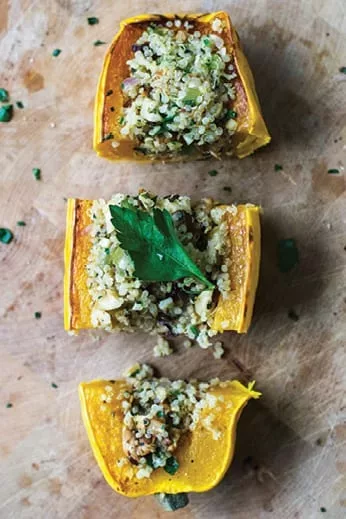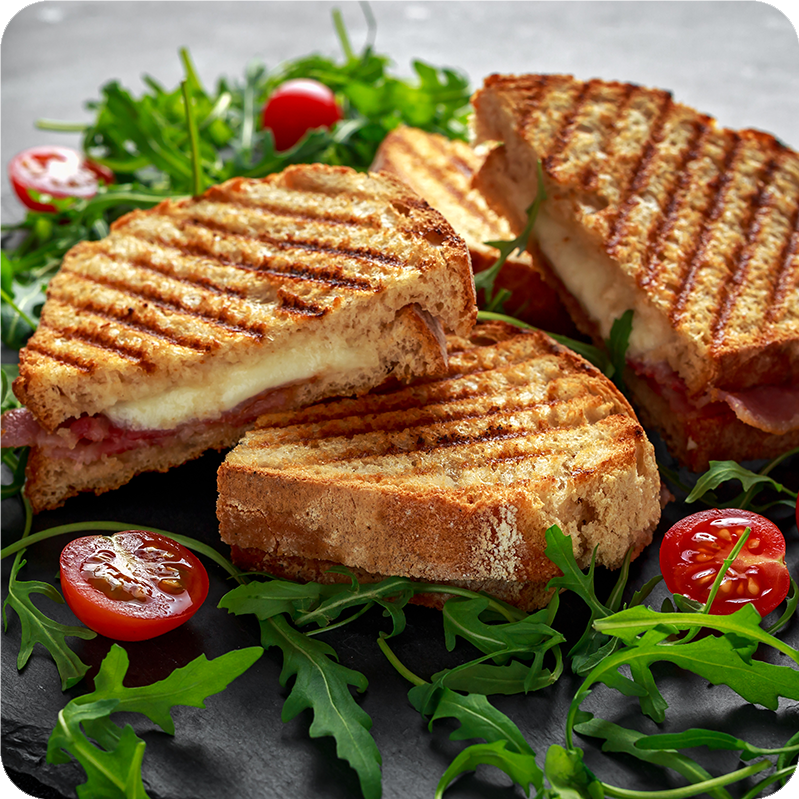
Ask the Nutritionist: Squash Talk
Dear Nutritionist: I always see different varieties of winter squash at the grocery store. However, I am unsure how to prepare them. Do you have any easy tips on how to cook and season squash?
Dear Member: Oh, squash! This tasty and nutritious vegetable is a wonderful addition to any fall or winter meal. They can be intimidating—with their tough skins, weird shapes and sizes, and overall awkward appearance. Even the thought of tackling them with a kitchen knife may seem daunting. However, rest assured; there is one very simple way to cook them all!
First I want to talk about why squash should become a staple produce item in every kitchen. When it comes to health benefits: squash are rich in fiber, which supports healthy blood sugar control; makes one feel full and satisfied, therefore promoting a healthy weight; and fuels friendly gut bacteria. In addition, squash are a very rich source of antioxidants, including vitamins A and C and polyphenols. Together these help reduce inflammation by quenching free radicals. Vitamins A and C promote skin and eye health, whereas polyphenols bolster heart health and circulation. Plus, the seeds inside are a great source of magnesium and zinc, two very important minerals for immune function and overall health.
The most common winter squash include butternut, delicata, spaghetti, and kabocha. The butternut squash is peanut shaped and beige in color. The longer the stem, the more flesh you get, as the seed cavity is in the small bulb. The delicata squash is often a fall favorite because of its delicate, edible rind. However, due to its rind, it cannot be held for long storage. The spaghetti squash is yellow in color and somewhat resembles a football. Due to its unique strands of flesh, this squash lends itself perfectly as a grain-free pasta substitute. And finally, the kabocha squash is dark green with blue-gray or orange striping and resembles the flavor of a sweet potato. All types are as unique in flavor and texture as they are in appearance.
To have a tasty squash meal, you must first know how to pick a quality squash. Look for squash that is heavy for its size, void of bruises or soft spots, has a matte instead of glossy finish, is deep in color, and has a stem that is dry and firm. This will ensure the cooked squash is not too dry and stringy and is rich in flavor as well as nutrition.
Method
Easy Squash Cooking Tips

- Wash your squash of choice and pat dry.
- Heat oven to 400 degrees, place squash in a baking dish, and roast for 40+ minutes depending on size. Some may require 60 minutes, while others may require 90 minutes. Generally, delicata and spaghetti squash require the least amount of time and the large butternut squash the most.
- Use a fork or knife to test for doneness by piercing the skin and flesh. It should be soft and cut like butter.
- Remove from oven and allow to cool enough to handle. Cut in half and scrape out the seeds.
- Use the flesh in soups, stuff the squash halves with a filling of your choice, or simply drizzle with extra virgin olive oil and season with fresh herbs, salt, and pepper.
- Note: I recommend roasting two or three squash at the same time, for an easy weekday dinner or side dish.






